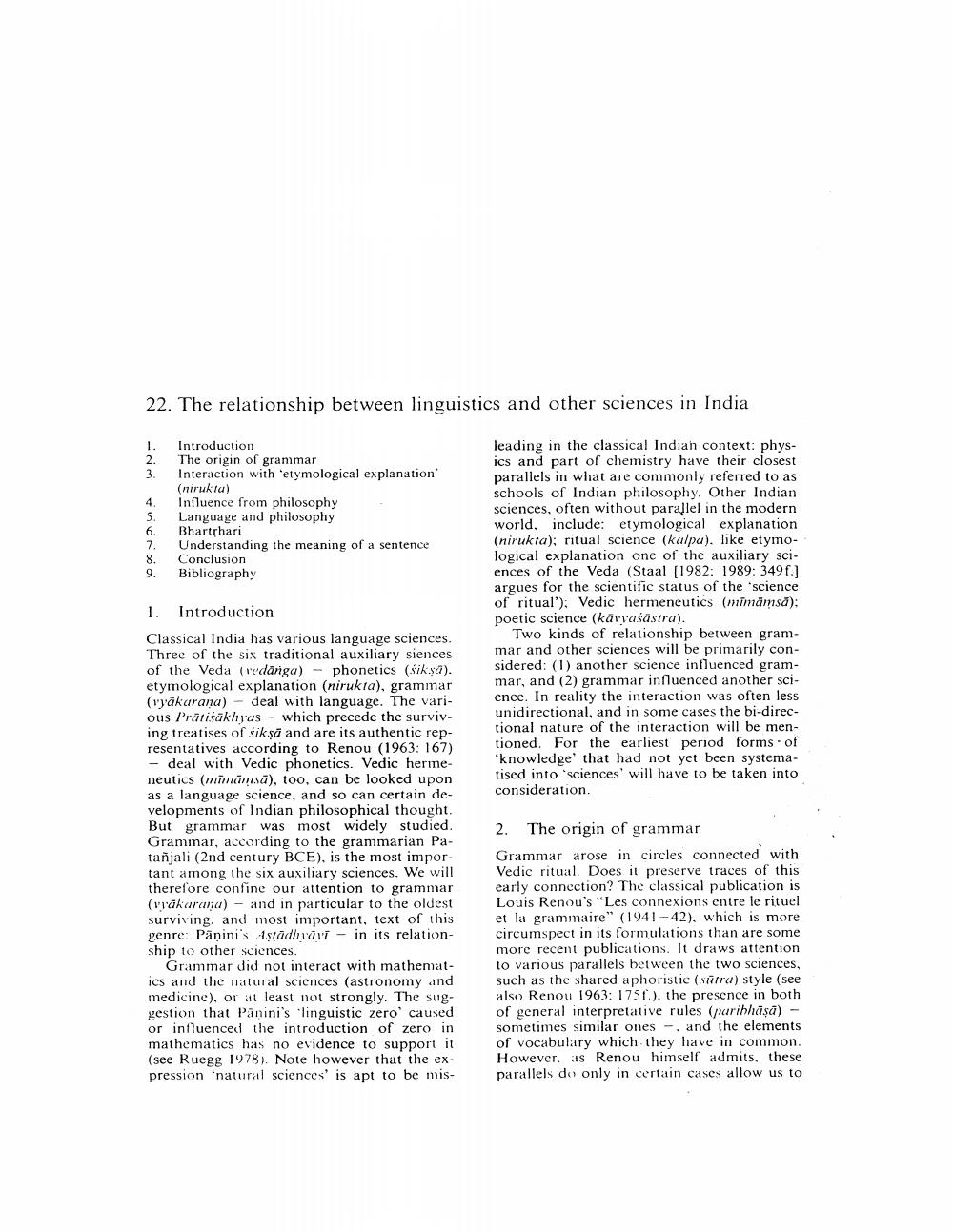Book Title: Relationship Between Linguistics And Other Sciences In India Author(s): Johannes Bronkhorst Publisher: Johannes Bronkhorst View full book textPage 1
________________ 22. The relationship between linguistics and other sciences in India 1. Introduction The origin of grammar Interaction with 'etymological explanation (niruktu) Influence from philosophy Language and philosophy Bhartrhari Understanding the meaning of a sentence Conclusion Bibliography 9. leading in the classical Indian context: physics and part of chemistry have their closest parallels in what are commonly referred to as schools of Indian philosophy, Other Indian sciences, often without parallel in the modern world. include: etymological explanation (nirukta); ritual science (kalpu). like etymo. logical explanation one of the auxiliary sciences of the Veda (Staal (1982: 1989: 349f.] argues for the scientific status of the 'science of ritual'); Vedic hermeneutics (mimämsā); poetic science (karvasästra). Two kinds of relationship between grammar and other sciences will be primarily considered: (1) another science influenced grammar, and (2) grammar influenced another science. In reality the interaction was often less unidirectional, and in some cases the bi-directional nature of the interaction will be mentioned. For the earliest period forms of 'knowledge that had not yet been systematised into 'sciences' will have to be taken into consideration. 1. Introduction Classical India has various language sciences. Three of the six traditional auxiliary siences of the Veda (vedänga) - phonetics (sikşa). etymological explanation (nirukta), grammar (vyākarana) - deal with language. The various Prátisakhjus - which precede the surviving treatises of siksa and are its authentic representatives according to Renou (1963: 167) - deal with Vedic phonetics. Vedic herineneutics (mimāmsā), too, can be looked upon as a language science, and so can certain developments of Indian philosophical thought. But grammar was most widely studied. Grammar, according to the grammarian Patañjali (2nd century BCE), is the most important among the six auxiliary sciences. We will therefore confine our attention to grammar (vrakaranu) - and in particular to the oldest surviving, and most important, text of this genre: Panini's Astādhri - in its relationship to other sciences. Grammar did not interact with mathematics and the natural sciences (astronomy and medicine), or at least not strongly. The suggestion that Panini's linguistic zero' caused or influenced the introduction of zero in mathematics has no evidence to support it (see Ruegg 1978). Note however that the expression 'natural sciences' is apt to be mis 2. The origin of grammar Grammar arose in circles connected with Vedic ritual. Does it preserve traces of this early connection? The classical publication is Louis Renou's "Les connexions entre le rituel et la grammaire" (1941-42), which is more circumspect in its formulations than are some more recent publications. It draws attention to various parallels between the two sciences, such as the shared aphoristic (sürra) style (see also Renou 1963: 1751.), the presence in both of general interpretative rules (paribhāṣā) - sometimes similar ones , and the elements of vocabulary which they have in common. However, its Renou himself admits, these parallels de only in certain cases allow us toPage Navigation
1 2 3 4 5 6 7 8
